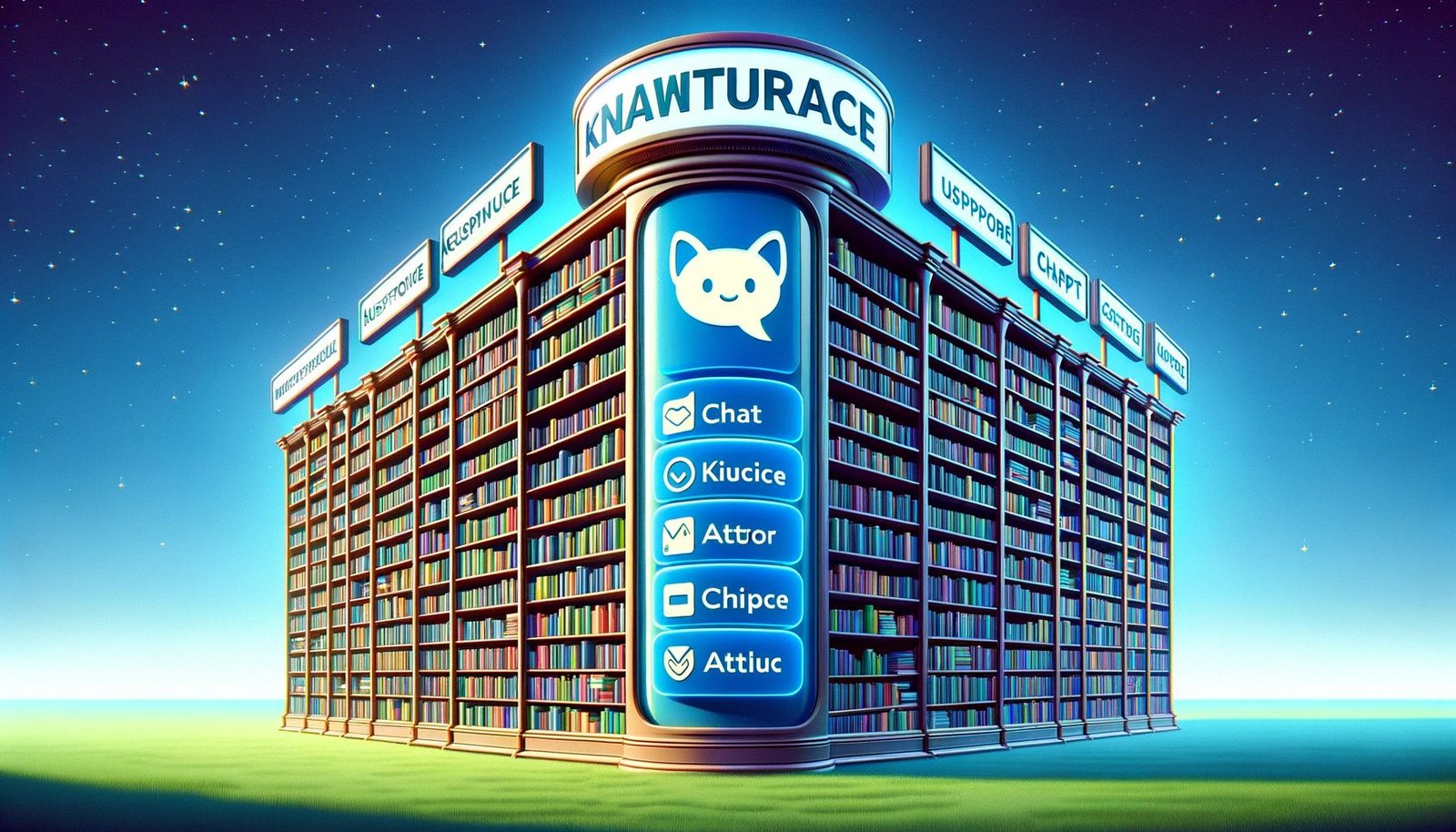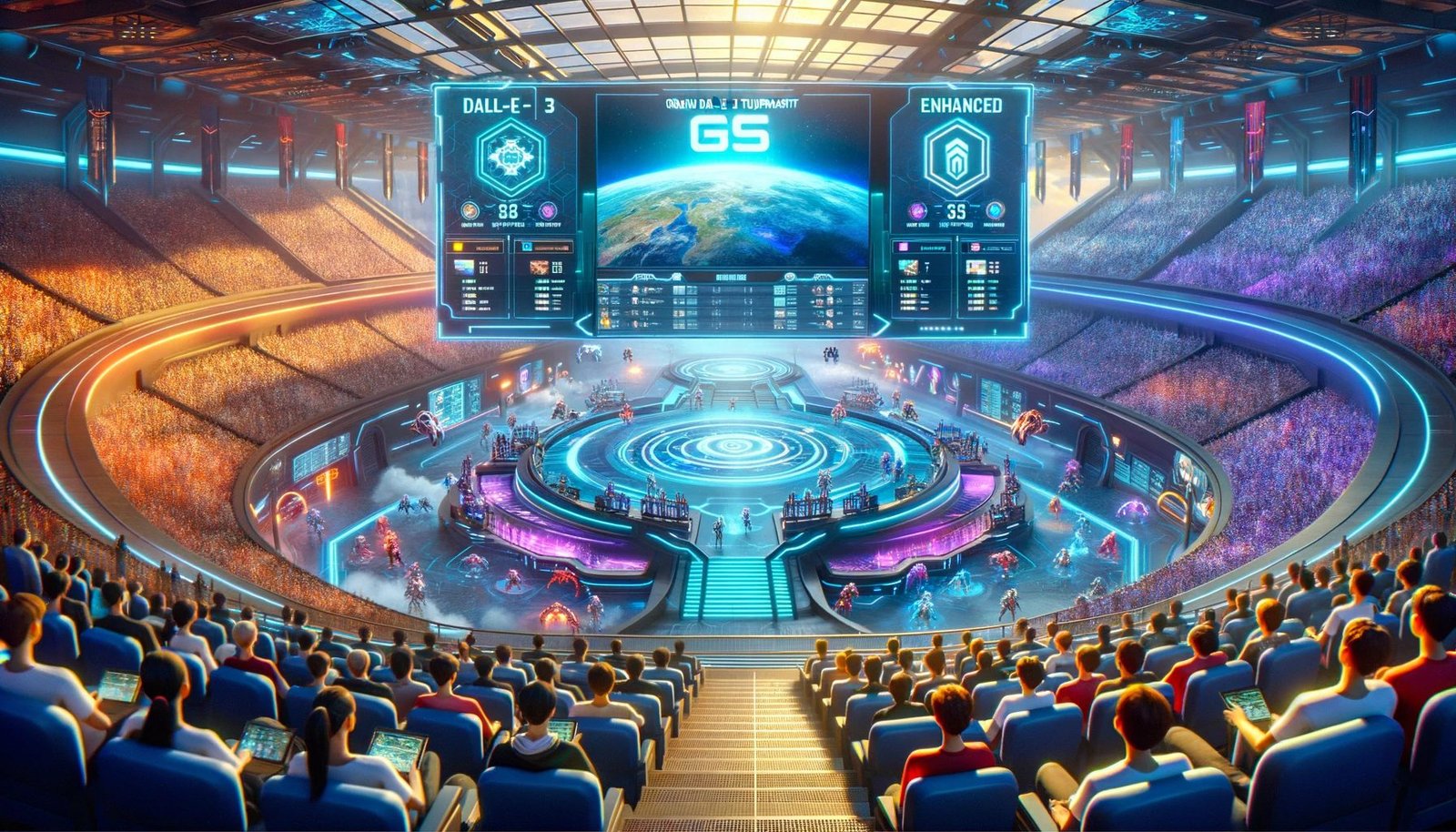The Future of Customer Service: 5 ChatGPT Alternatives That Will Blow Your Mind
The Future of Customer Service: 5 ChatGPT Alternatives That Will Blow Your Mind
Introduction – 5 ChatGPT Alternatives That Will Blow Your Mind
In the ever-evolving realm of artificial intelligence, certain innovations stand out, shaping industries and redefining user experiences. Among these, ChatGPT, developed by OpenAI, has emerged as a beacon in the conversational AI domain.
A brief overview of ChatGPT and its significance in the conversational AI landscape.
ChatGPT, a derivative of the larger GPT (Generative Pre-trained Transformer) models, has been specifically fine-tuned for human-like text generation, making it a go-to for chatbots, customer support automation, and even creative writing assistance. Its ability to understand context, generate coherent responses, and simulate human conversation has set new standards in the AI industry. With platforms like WordPress web development for education integrating such conversational AI tools, the reach and impact of ChatGPT are undeniable. Its significance is not just in its technical prowess but in its potential to revolutionize human-machine interactions, making them more seamless, personalized, and efficient.
Setting the stage for mind-blowing alternatives.
While ChatGPT has been a trailblazer, the rapid advancements in AI mean that there are emerging tools and platforms that offer similar, if not more enhanced, capabilities. These alternatives, some inspired by ChatGPT and others charting their own unique paths, are pushing the boundaries of what conversational AI can achieve. As we delve deeper into this article, we’ll explore these mind-blowing alternatives, understanding their features, applications, and how they compare to the benchmark set by ChatGPT. Whether you’re an AI enthusiast, a business looking to integrate chat solutions, or simply curious about the future of conversational AI, you’re in for an enlightening journey.
What is ChatGPT?
ChatGPT, a marvel in the world of artificial intelligence, has been a topic of discussion, admiration, and curiosity since its inception. But what exactly is it, and why has it garnered such attention?
A quick history and background of ChatGPT.
Originating from the labs of OpenAI, ChatGPT is a subset of the larger GPT models, specifically fine-tuned for conversational tasks. The GPT lineage, known for its large-scale transformers, began with GPT, followed by the more advanced GPT-2 and the even more sophisticated GPT-3. Each iteration brought with it increased parameters, better training data, and more refined outputs. ChatGPT, leveraging this legacy, was designed to simulate human-like conversations. Its training involved vast amounts of text from books, articles, and websites, enabling it to generate coherent, contextually relevant, and often creative responses to user prompts. Platforms like WordPress for freelancers have even considered integrating such AI for enhanced user interactions.
Its capabilities and primary applications.
ChatGPT’s prowess lies in its ability to understand context, generate text that aligns with the given prompts, and offer human-like interactions. Unlike many chatbots that rely on predefined scripts, ChatGPT can adapt its responses based on the conversation flow. This adaptability has led to its use in diverse applications:
- Customer Support: Automating responses to frequently asked questions, guiding users through troubleshooting processes, and offering 24/7 support.
- Content Creation: Assisting writers by suggesting content, helping with creative writing, and even generating short pieces of text.
- Entertainment: Engaging users in interactive storytelling, gaming narratives, and casual conversations.
- Education: Assisting students with queries, offering explanations, and simulating tutor-like interactions, much like tools used in WordPress web development for education.
- Business Automation: Handling appointment bookings, gathering initial client information, and automating repetitive tasks.
The versatility of ChatGPT, combined with its advanced AI capabilities, has solidified its position as a frontrunner in the conversational AI landscape, setting the stage for current and future innovations in the domain.
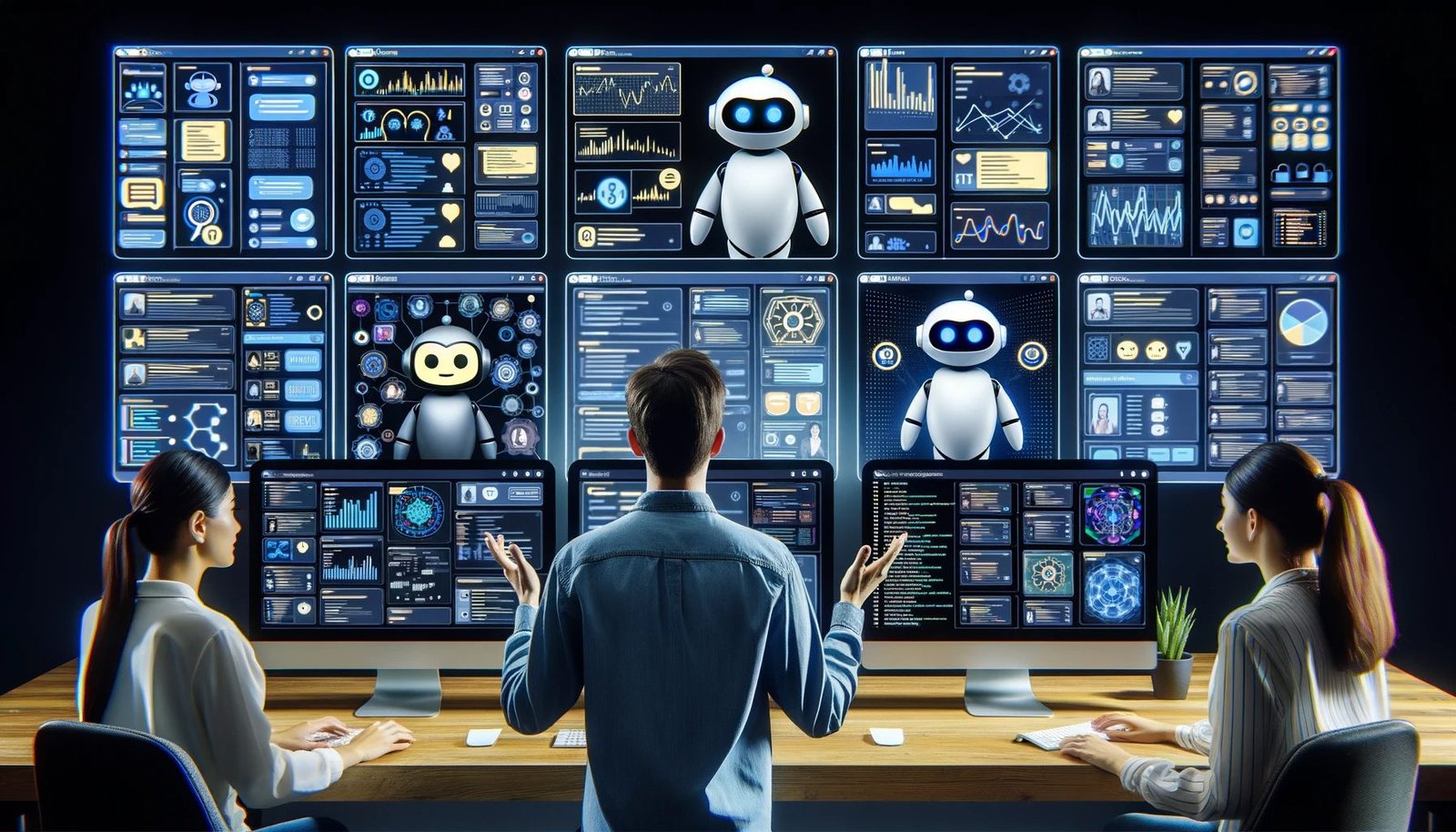
The Need for Alternatives
In the dynamic world of technology, one size rarely fits all. As businesses diversify and user needs become more intricate, the demand for tailored solutions grows exponentially. This is particularly evident in the realm of conversational AI, where the interaction between machine and human is at its most intimate.
Discussing the diverse needs of businesses and users.
Every business is unique, with its own set of challenges, target audiences, and objectives. A multinational corporation might require a chatbot that can handle thousands of queries simultaneously, integrate with complex CRM systems, and operate in multiple languages. In contrast, a local WordPress-based e-commerce store might need a simpler solution to guide visitors through product selections and handle basic inquiries.
Users, too, have varied expectations. Some seek quick, straightforward answers, while others might appreciate a more human-like interaction, complete with humor and empathy. For instance, a tech-savvy user might prefer a chatbot that understands and responds to complex technical jargon, while a novice might appreciate simpler explanations.
The ever-evolving landscape of conversational AI.
The field of conversational AI is not static. As with all technological domains, it’s in a state of constant evolution. New research, increased computational power, and vast amounts of data contribute to rapid advancements. Tools like ChatGPT, while revolutionary today, might be commonplace tomorrow, replaced by even more advanced alternatives.
Moreover, as businesses witness the benefits of integrating AI into their operations, the demand for specialized solutions grows. For instance, while ChatGPT might excel in general conversations, there might be a need for AI that specializes in medical consultations, legal advice, or even WordPress web development support.
Top ChatGPT Alternatives That Will Amaze You
In the dynamic world of conversational AI, while ChatGPT has made significant strides, it’s not the only player in the game. Several innovative platforms have emerged, each bringing its unique flair and capabilities to the table. Whether you’re a business looking to enhance customer interactions or an individual seeking a more personalized chatbot experience, there’s likely an alternative tailored to your needs. In this article, we’ll delve deep into some of the most impressive ChatGPT alternatives, shedding light on their features, strengths, and what sets them apart in the crowded AI landscape. Stay tuned as we unveil platforms that might just redefine your perception of conversational AI.
Alternative 1: Huggingface
Overview of Huggingface and its significance in the AI community.
Huggingface, often dubbed the “GitHub of Machine Learning,” has rapidly ascended the ranks in the AI community. It’s not just a platform but a movement fostering collaboration and open-source sharing among AI enthusiasts, researchers, and developers. With its extensive model hub and thriving community, Huggingface has democratized access to state-of-the-art NLP models, making it easier for developers to implement and fine-tune them for diverse applications.
Unique features that make it stand out as a ChatGPT alternative.
While ChatGPT is undeniably powerful, Huggingface brings a different set of cards to the table. One of its standout features is the Transformers library, which offers seamless access to a plethora of pre-trained models, including BERT, GPT-2, and more. The platform’s user-friendly interface, combined with its commitment to open-source principles, empowers users to not only utilize existing models but also contribute their own. This collaborative ecosystem ensures continuous innovation and refinement, catering to a wide range of use cases.
How it works, its applications, and its effectiveness in various tasks.
At its core, Huggingface leverages transformer architectures, which have revolutionized the way machines understand and generate human language. By providing easy-to-use APIs and tools, it simplifies the process of integrating these complex models into applications. Whether it’s sentiment analysis, text generation, or language translation, Huggingface has proven its mettle in various tasks. Its effectiveness is not just a testament to the robustness of the models but also to the vibrant community that continuously refines and optimizes them. In the realm of conversational AI, Huggingface offers a compelling alternative, promising versatility, scalability, and a touch of collaborative spirit.
Alternative 2: Google BERT (and its variations)
Introduction to BERT and its impact on natural language processing.
BERT, which stands for Bidirectional Encoder Representations from Transformers, is a brainchild of Google’s AI team and has undeniably revolutionized the field of natural language processing (NLP). Before BERT, most language models read text sequences in one direction (either left-to-right or right-to-left), but BERT’s bidirectional approach allows it to consider the context from both sides. This seemingly simple shift has led to significant improvements in understanding the nuances and intricacies of human language. Since its introduction, BERT has become a foundational model, spawning numerous variations and adaptations tailored to specific tasks and languages.
How BERT differs from ChatGPT in terms of training and capabilities.
While both BERT and ChatGPT are built upon transformer architectures, their training objectives and capabilities differ. BERT is primarily trained to predict missing words in a sentence, making it exceptionally good at understanding context. This “masked language model” approach allows BERT to deeply grasp the relationships between different words in a sentence. On the other hand, ChatGPT, being a generative model, is trained to produce coherent and contextually relevant text sequences, making it more suited for tasks like text generation. In Essence, while BERT excels at understanding and extracting information from text, ChatGPT shines in generating human-like textual content.
Real-world applications and use cases where BERT shines.
BERT’s prowess in understanding context has made it a go-to choice for a myriad of NLP tasks. It has shown remarkable results in:
- Search Engines: Enhancing search results by better understanding the intent behind queries.
- Sentiment Analysis: Determining the sentiment of user reviews with higher accuracy.
- Question Answering Systems: Extracting precise answers from large datasets.
- Text Classification: Categorizing text into predefined classes based on its content.
- Named Entity Recognition: Identifying and classifying entities in text, such as names, places, and dates.
Furthermore, BERT’s variations, like Roberta, DistilBERT, and TinyBERT, offer optimized solutions for different computational needs, ensuring that the power of BERT can be harnessed across various platforms, from robust servers to mobile devices.
Alternative 3: OpenNMT
A brief about OpenNMT and its role in machine translation and other NLP tasks.
OpenNMT, an open-source neural machine translation framework, has carved a niche for itself in the realm of machine translation and broader NLP tasks. Initially developed by Harvard NLP, it was designed to be both research-friendly and production-ready, ensuring that it caters to the needs of both academia and industry. While its primary focus has been on machine translation, the flexibility of the framework has allowed it to be adapted for various other NLP tasks, including summarization, image-to-text processing, and more.
Features that make it a potential alternative to ChatGPT.
While ChatGPT is renowned for its conversational capabilities, OpenNMT boasts features that position it as a formidable alternative, especially in specific domains:
- Modularity: OpenNMT is designed to be modular, allowing users to customize and extend its capabilities easily.
- Scalability: It supports training on multiple GPUs, ensuring faster model training.
- Diverse Architectures: OpenNMT supports various architectures, including sequence-to-sequence, transformer, and more, providing flexibility in model design.
- Tokenization and Preprocessing: Built-in tools for text tokenization and preprocessing streamline the data preparation process.
- Active Community: Being open-source, OpenNMT has fostered a vibrant community that continuously contributes to its improvement, ensuring it stays at the forefront of NLP advancements.
Practical applications and the community around OpenNMT.
OpenNMT’s robustness and flexibility have led to its adoption in various real-world scenarios:
- Machine Translation: Companies and researchers leverage OpenNMT for translating text between multiple languages, especially in scenarios where custom training data is available.
- Content Summarization: Automated summarization of long articles or documents.
- Speech Recognition: Converting spoken language into written text.
- Sentiment Analysis: Analyzing text to determine its sentiment or emotion.
The community around OpenNMT is one of its strongest assets. With an active forum, regular updates, and a plethora of community-contributed extensions and tools, users ranging from novices to experts find a supportive ecosystem to help them harness the power of OpenNMT effectively.
Alternative 4: Rasa
Introduction to Rasa as a conversational AI platform.
Rasa stands out as a prominent open-source conversational AI platform designed specifically for developers to create contextual and intelligent chatbots and virtual assistants. Unlike many other platforms that rely on predefined conversation flows, Rasa uses machine learning to understand and predict user behaviors, ensuring more natural and dynamic interactions. Its two main components, Rasa NLU (Natural Language Understanding) and Rasa Core work in tandem to process user inputs and manage conversation flows, respectively.
How Rasa provides tools for building chatbots and virtual assistants.
Rasa offers a comprehensive suite of tools tailored for chatbot development:
- Rasa NLU: This component is responsible for understanding the user’s messages, extracting entities, and converting them into structured data.
- Rasa Core: It manages the conversation flow, deciding on how the bot should respond based on the predicted next action.
- Rasa X: An interface that allows developers to improve their bots by annotating data, testing conversations, and viewing analytics.
- Custom Actions: Developers can define specific actions, like querying a database or calling an API, to be executed during conversations.
- Interactive Learning: This feature allows developers to provide real-time feedback to the bot, refining its decision-making process.
Comparing the flexibility and customization options of Rasa with ChatGPT.
While ChatGPT is primarily a pre-trained model designed for general-purpose conversations, Rasa offers a platform that can be trained and fine-tuned for specific use cases. Here are some comparative insights:
- Customization: Rasa’s open-source nature allows developers to dive deep into its code, making granular customizations to suit specific needs. ChatGPT, on the other hand, is more of a black-box model with limited customization options.
- Training Data: With Rasa, developers can use their own training data, ensuring the bot is tailored to specific industries or domains. ChatGPT is trained on vast and diverse datasets, making it versatile but less specialized.
- Integration: Rasa provides tools and connectors for integrating with various platforms and services, whereas ChatGPT requires additional tools or wrappers for similar integrations.
- Scalability: Both platforms are scalable, but Rasa’s open-source nature means there are no additional costs associated with scaling up, unlike potential API call costs with ChatGPT.
In Essence, while ChatGPT excels in general conversational capabilities, Rasa shines when there’s a need for specialized, deeply customized chatbot solutions.
Comparative Analysis: ChatGPT vs. Alternatives
Strengths and weaknesses of each platform:
ChatGPT:
Strengths:
- Versatility: Trained on diverse datasets, making it adept at handling a wide range of topics.
- Natural Conversations: Generates human-like responses, ensuring smooth interactions.
- Easy Integration: With platforms like OpenAI, it’s relatively straightforward to integrate ChatGPT into various applications.
Weaknesses:
- Generalization: Being a general-purpose model, it might not be specialized for niche tasks.
- Cost: API calls to ChatGPT, especially for high-traffic applications, can become costly.
- Limited Customization: Fine-tuning options are limited compared to open-source alternatives.
Huggingface:
Strengths:
- Extensive Model Hub: Offers a wide variety of pre-trained models for different tasks.
- Community-Driven: Continuous contributions from the AI community ensure up-to-date models and tools.
- Flexibility: Allows for fine-tuning and customization of models.
Weaknesses:
- Complexity: It might have a steeper learning curve for beginners compared to ChatGPT.
- Resource Intensive: Training or fine-tuning models can be resource-heavy.
Google BERT:
Strengths:
- Deep Understanding: Excels in understanding the context of words in a sentence.
- Transfer Learning: This can be fine-tuned for a variety of NLP tasks using a smaller amount of data.
- Industry Recognition: Backed by Google, ensuring continuous updates and improvements.
Weaknesses:
- Training Costs: Training BERT from scratch requires significant computational resources.
- Complexity: Requires expertise to fine-tune and optimize for specific tasks.
OpenNMT:
Strengths:
- Specialization: Primarily designed for machine translation but adaptable to other NLP tasks.
- Open-Source: Offers flexibility for customization and deep modifications.
- Community Support: Benefits from contributions and support from the AI community.
Weaknesses:
- Niche Focus: While adaptable, it’s primarily designed for translation tasks.
- Technical Expertise: Requires a good understanding of NLP and machine translation for optimal results.
Rasa:
Strengths:
- Deep Customization: The open-source nature allows for granular customizations.
- Domain Specialization: Can be trained for specific industries or domains.
- Integrated Tools: Offers a suite of tools for end-to-end chatbot development.
Weaknesses:
- Learning Curve: It might be challenging for beginners to set up and optimize.
- Maintenance: Requires continuous training and updates to stay relevant.
Suitability for different use cases:
- General Conversations: ChatGPT stands out due to its versatility and human-like interactions.
- Specific NLP Tasks: Huggingface and BERT are more suitable due to their extensive model repositories and fine-tuning capabilities.
- Machine Translation: OpenNMT is the go-to platform, given its specialization in this domain.
- Customized Chatbots: Rasa excels when there’s a need for domain-specific, deeply customized chatbot solutions.
How Do These Alternatives Work?
A deep dive into the technology behind these alternatives:
Huggingface:
Neural Networks:
- Huggingface primarily leverages Transformer-based architectures, which have become the backbone of modern NLP tasks. Transformers use self-attention mechanisms to weigh input data differently, enabling the model to focus on more relevant parts of the input.
Training Data:
- Models on Huggingface’s platform, like BERT or GPT-2, are trained on vast datasets, often encompassing large portions of the internet, to gain a broad understanding of language.
Technical Aspects:
- Huggingface’s
transformersThe library provides tools for both training custom models and fine-tuning pre-trained ones. It supports various optimization techniques to make training more efficient.
Google BERT:
Neural Networks:
- BERT (Bidirectional Encoder Representations from Transformers) is also based on the Transformer architecture. Its uniqueness lies in its bidirectional training, meaning it learns the context from both the left and right of a word in a sentence.
Training Data:
- BERT is trained on large datasets like the English Wikipedia and BooksCorpus, enabling it to understand context deeply.
Technical Aspects:
- BERT models can be fine-tuned with additional training data for specific tasks, making them versatile. They utilize masked language modeling during training, where random words are replaced with a [MASK] token, and the model learns to predict them.
OpenNMT:
Neural Networks:
- OpenNMT primarily uses sequence-to-sequence (seq2seq) models, which are designed to convert sequences from one domain (like one language) into sequences in another domain (another language).
Training Data:
- OpenNMT models are trained on parallel corpora, where sentences in one language are aligned with their translations in another language.
Technical Aspects:
- The platform supports attention mechanisms, which help the model focus on relevant parts of the input sequence when producing an output. It also provides tools for handling large vocabularies efficiently.
Rasa:
Neural Networks:
- Rasa uses RNNs (Recurrent Neural Networks) to understand the context of user inputs. It also employs the Transformer architecture for more advanced models.
Training Data:
- Rasa models are trained on conversational data specific to the domain of the chatbot. This includes user intents, entities, and the expected responses or actions of the bot.
Technical Aspects:
- Rasa provides a pipeline approach where developers can customize the sequence of NLP tasks (like tokenization, intent classification, and entity recognition) to best suit their data and use case.
In Essence, while all these platforms leverage neural networks and vast amounts of training data, the specifics of their architectures, training methodologies, and technical tools vary. This diversity ensures that there’s a solution tailored for almost every conceivable NLP challenge.
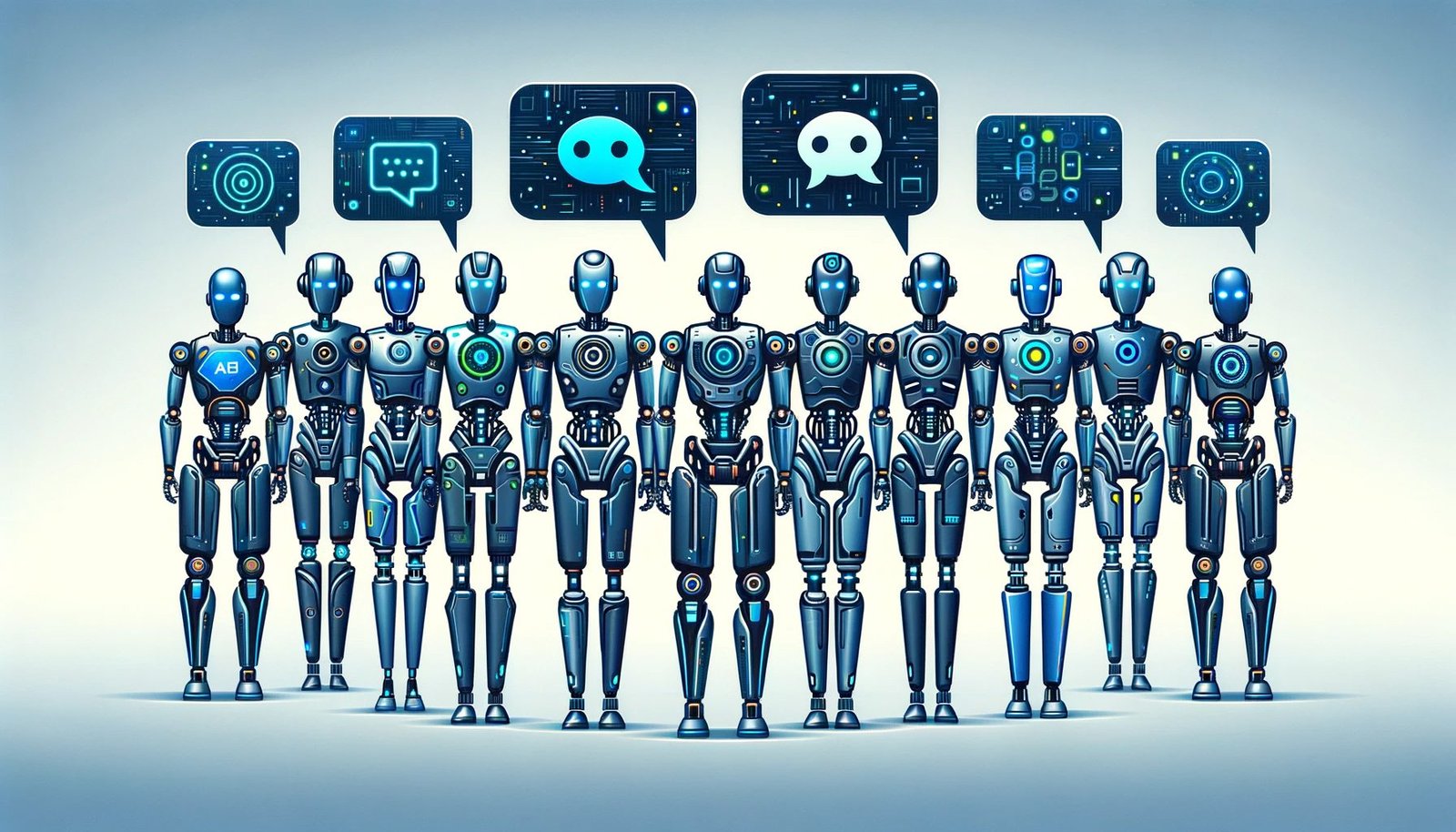
Effectiveness of ChatGPT Alternatives in Today’s World
Analyzing current trends and feedback:
Huggingface:
Trends:
- Huggingface’s
transformersThe library has become a go-to for many researchers and developers in the NLP community. Its ease of use and the vast collection of pre-trained models have made it a favorite.
Feedback:
- Many users appreciate the platform’s continuous updates, active community, and ability to quickly implement state-of-the-art models.
Real-world Applications:
- Companies are using Huggingface for tasks like sentiment analysis, document classification, and even generating creative content.
Google BERT:
Trends:
- BERT’s bidirectional training approach revolutionized the way models understand context in NLP tasks. Its variations, like RoBERTa and DistilBERT, have further solidified its position.
Feedback:
- BERT is praised for its accuracy, but some users find it resource-intensive, especially for real-time applications.
Real-world Applications:
- BERT is widely used in search engines, chatbots, and recommendation systems to understand user queries and content context better.
OpenNMT:
Trends:
- With the rise of globalization, the demand for accurate machine translation tools has surged. OpenNMT, with its focus on translation, has gained traction.
Feedback:
- Users often commend its flexibility and the quality of translations, though training custom models can be resource-intensive.
Real-world Applications:
- Businesses use OpenNMT for translating websites, documents, and customer support queries. It’s also used in academia for research purposes.
Rasa:
Trends:
- As businesses seek more control over their chatbot data and interactions, open-source platforms like Rasa are gaining popularity.
Feedback:
- Rasa is lauded for its flexibility, allowing businesses to create customized chatbot solutions. However, there’s a steeper learning curve compared to some plug-and-play solutions.
Real-world Applications:
- Companies across sectors, from healthcare to finance, use Rasa to build virtual assistants, customer support bots, and even internal HR bots.
In summary, the effectiveness of these ChatGPT alternatives is evident in their widespread adoption across industries. Their success stories, combined with continuous advancements, underscore their relevance in today’s AI-driven world.
Community Feedback on ChatGPT Alternatives
Testimonials and reviews from users and developers:
Huggingface:
Testimonials:
- “Huggingface’s transformers library has been a game-changer for our NLP projects. The ease of accessing state-of-the-art models is unparalleled.” – Jordan T., AI Developer.
- “I was able to implement a sentiment analysis tool in a day using Huggingface. The community support is fantastic!” – Priya R., Data Scientist.
Common Questions:
- How do I fine-tune models using Huggingface?
- Huggingface provides comprehensive documentation and tutorials on fine-tuning their pre-trained models for specific tasks.
Google BERT:
Testimonials:
- “BERT has significantly improved the accuracy of our search engine. The context-awareness it brings is next-level.” – Alex L., Tech Lead.
- “Training BERT from scratch is resource-intensive, but the results are worth it. Our chatbot now understands user queries much better.” – Sofia K., NLP Engineer.
Common Questions:
- Is BERT suitable for real-time applications?
- While BERT is powerful, it can be resource-intensive. For real-time applications, consider using lighter variations like DistilBERT.
OpenNMT:
Testimonials:
- “OpenNMT has been instrumental in our global expansion. The quality of translations is impressive.” – Carlos M., Product Manager.
- “For academic research in machine translation, OpenNMT has been a reliable tool. The community is active and helpful.” – Dr. Ying Z., Researcher.
Common Questions:
- How does OpenNMT compare to other machine translation tools?
- OpenNMT offers flexibility and customization, making it suitable for both standard and niche translation tasks.
Rasa:
Testimonials:
- “Building a chatbot with Rasa gave us full control over the data and user interactions. It’s perfect for businesses with specific needs.” – Nina P., CTO.
- “There’s a learning curve with Rasa, but the end result is a highly customized chatbot tailored to our needs.” – Harish D., Developer.
Common Questions:
- How steep is the learning curve for Rasa?
- While Rasa offers more customization, it might require more initial setup and understanding compared to out-of-the-box solutions. However, their documentation and community are robust and supportive.
The feedback from the community highlights the strengths and potential areas of improvement for each ChatGPT alternative. It’s evident that while each tool has its unique advantages, the choice often boils down to specific project needs and preferences.
The Future of Conversational AI
Predictions and trends for the coming years:
The realm of conversational AI is rapidly evolving, with advancements in technology and changing user behaviors driving the next wave of innovations. Here are some predictions and trends we can anticipate in the coming years:
- Seamless Human-AI Interactions: As conversational AI models become more sophisticated, the distinction between interacting with a human and a bot will blur. Users will experience more natural, fluid conversations with AI, devoid of the robotic responses we’ve grown accustomed to.
- Multimodal Conversations: Future conversational AI will not be limited to text or voice. We’ll see a rise in multimodal interactions, where AI can understand and respond through multiple channels, such as text, voice, gestures, and even facial expressions.
- Proactive AI Assistants: Instead of waiting for user prompts, AI will proactively offer assistance based on contextual understanding, past interactions, and predictive analysis. For instance, an AI assistant might suggest ordering your favorite meal when it knows you’ve had a long day.
- Enhanced Personalization: With advancements in data analytics and machine learning, conversational AI will offer hyper-personalized experiences, tailoring responses and actions to individual user preferences, behaviors, and emotions.
- Ethical and Responsible AI: As AI becomes more integrated into our daily lives, there will be a stronger emphasis on ethical considerations, transparency, and responsible AI development. This includes addressing biases, ensuring privacy, and providing users with control over their data.
The potential for new players and advancements:
The conversational AI landscape is ripe for innovation, and while giants like OpenAI and Google dominate the scene, there’s ample opportunity for new players to make a mark.
- Niche Solutions: As businesses across various sectors realize the potential of conversational AI, there will be a demand for solutions tailored to specific industries, such as healthcare, finance, or education.
- Open-Source Innovations: The success of platforms like Huggingface and Rasa indicates a growing trend towards open-source AI solutions. This democratization allows for more collaborative advancements and rapid innovation.
- Integration with Augmented and Virtual Reality: As AR and VR technologies mature, there’s potential for conversational AI to play a pivotal role in these immersive experiences, offering interactive and responsive virtual entities.
- Edge Computing and AI: With the rise of edge computing, we’ll see more powerful AI models running directly on user devices, ensuring faster responses and greater data privacy.
- Collaborative AI: Future AI models will not just respond to user prompts but will collaborate with users, understanding context, offering suggestions, and even learning from user feedback in real time.
The future of conversational AI is brimming with possibilities. As technology continues to advance and our understanding of human-AI interaction deepens, the next decade promises a transformative era for conversational AI.
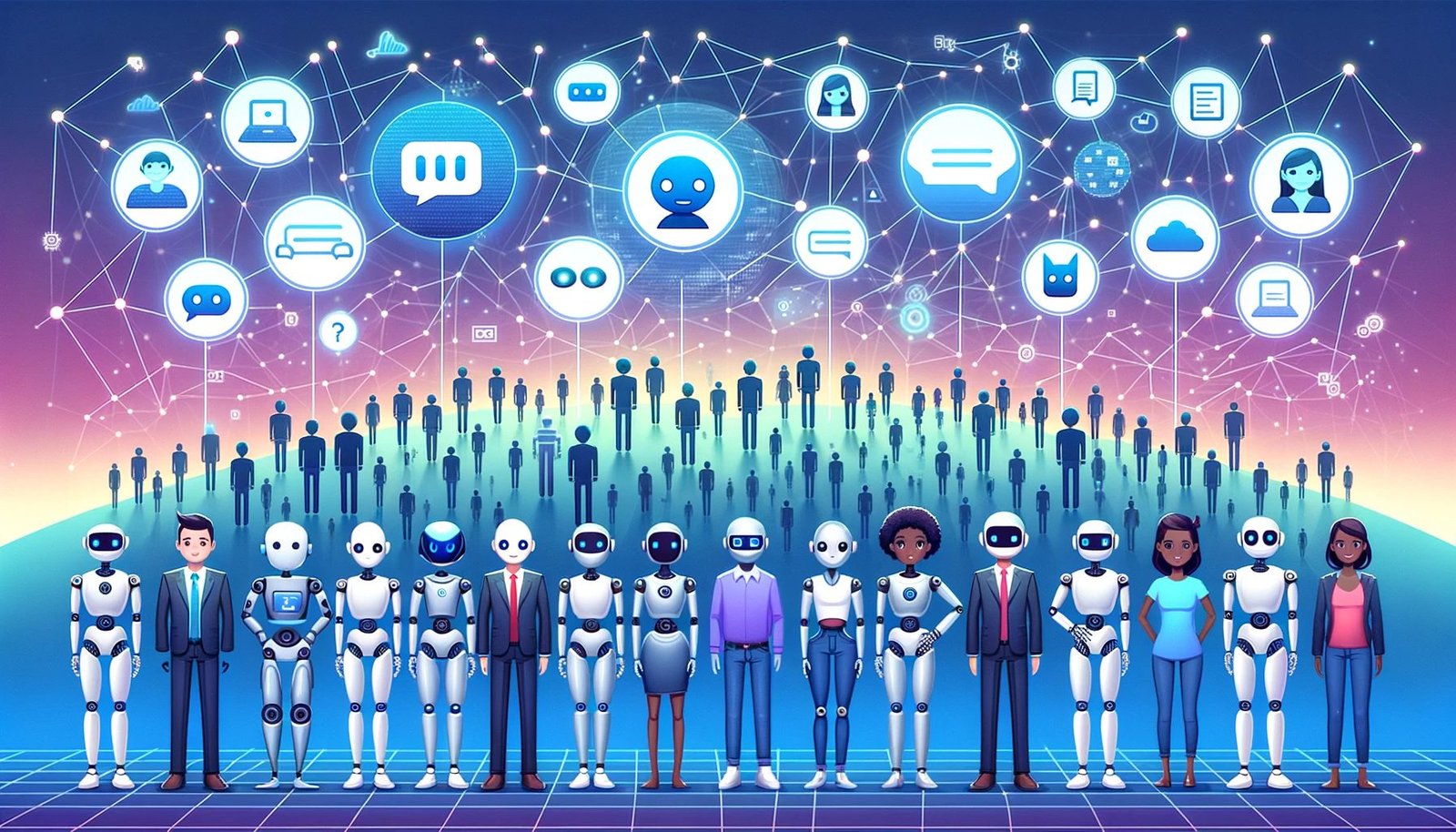
ChatGPT Alternatives General Knowledge: Fun Facts and Trivia
Huggingface:
- Name Origins: The name “Huggingface” might sound playful, but it’s inspired by the classic emoji representing a smiling face hugging another with open arms. It symbolizes the company’s approach to making AI friendly and accessible.
- Collaborative Community: Huggingface boasts one of the largest model-sharing communities, with thousands of pre-trained models available for various tasks, languages, and domains.
- From Chatbot to NLP Giant: Huggingface initially started as a chatbot app for teenagers but pivoted to become a major player in the NLP research community.
Google BERT:
- BERT’s Full Name: BERT stands for “Bidirectional Encoder Representations from Transformers.” Quite a mouthful, hence the acronym!
- Inspired by Sesame Street?: The name “BERT” is often humorously associated with the character from the popular children’s show Sesame Street. In fact, many of its subsequent versions, like Roberta, have continued the trend.
- Training Power: Training BERT from scratch requires 16 Cloud TPUs and several days of processing time, showcasing the immense computational power behind it.
OpenNMT:
- Open Source Spirit: OpenNMT started as a research project at Harvard and has since grown into a global community-driven initiative.
- Beyond Translation: While primarily known for machine translation, OpenNMT’s framework supports tasks like summarization, content transformation, and even image-to-text processing.
Rasa:
- Name’s Essence: “Rasa” in Sanskrit means “essence” or “flavor,” capturing the Essence of natural conversations in AI.
- Community First: Rasa places a strong emphasis on its community, hosting regular events, forums, and even a Rasa Summit for developers and enthusiasts.
- Two Main Components: Rasa’s framework consists of Rasa NLU (Natural Language Understanding) for intent classification and entity extraction and Rasa Core for dialogue management.
General Trivia:
- Transformer Architecture: Most modern conversational AI models, including BERT and GPT variants, are built upon the Transformer architecture, a groundbreaking development in deep learning.
- Fine-tuning is Key: While pre-trained models offer a strong foundation, their true power is unlocked when fine-tuned on specific datasets, tailoring them to niche applications.
- Multilingual Models: Many of these AI models are not just limited to English. They support multiple languages, and some, like mBERT (multilingual BERT), can understand over 100 languages!
- Ethical Debates: The rise of conversational AI has sparked ethical debates, especially around topics like data privacy, biases in AI, and the potential misuse of generated content.
Diving into the world of conversational AI reveals a fascinating blend of technology, linguistics, and human behavior. These fun facts and trivia offer just a glimpse into the vast and ever-evolving landscape of chatbot alternatives and their intriguing backstories.
Conclusion
The realm of conversational AI has witnessed a meteoric rise in recent years, with ChatGPT emerging as a frontrunner in this domain. However, as we’ve journeyed through this exploration, it’s evident that the landscape is rich with alternatives, each bringing its unique strengths, features, and capabilities to the table.
From the deep linguistic understanding of BERT to the customizable conversational flows of Rasa, from the community-driven spirit of Huggingface to the specialized machine translation prowess of OpenNMT, there’s a solution tailored for every need. These platforms, while diverse in their offerings, share a common goal: to make human-machine interactions more natural, efficient, and meaningful.
As the world becomes increasingly digitized and businesses strive to offer enhanced user experiences, the significance of conversational AI will only amplify. Whether you’re a developer aiming to integrate AI into your applications, a business seeking to enhance customer interactions, or merely an enthusiast eager to understand the latest in tech, there’s a vast ocean of possibilities waiting to be explored.
In conclusion, while ChatGPT has set a high benchmark in the conversational AI arena, the alternatives we’ve discussed are not just competitors but vital cogs in the ever-evolving machine of AI-driven communication. We encourage our readers to dive deep, experiment, and find the platform that resonates best with their vision and requirements. The future of conversational AI is not just about one tool or platform; it’s about the collective progress we make as a community, pushing the boundaries of what’s possible.
We’ve embarked on a fascinating journey through the world of conversational AI, exploring ChatGPT and its remarkable alternatives. But the conversation doesn’t end here; it’s just the beginning!
Share Your Experiences: Have you experimented with ChatGPT or any of the alternatives like WordPress web development for education? We’d love to hear about your experiences, challenges, and success stories. Your insights can be invaluable to others in the community, helping them make informed decisions.
Feedback is Gold: Your feedback drives us. Whether it’s a suggestion, a critique, or a topic you’d like us to delve into next, we’re all ears. Our aim is to provide content that resonates with our readers, and your input plays a pivotal role in shaping that.
Join the Conversation: The world of AI is vast, dynamic, and ever-evolving. By sharing knowledge, insights, and perspectives, we can collectively push the boundaries and chart new territories. So, whether you’re an AI enthusiast, a developer, a business owner, or just someone curious about the future of tech, we invite you to join the conversation on platforms like Fiverr.
Stay Tuned for More: We’re constantly exploring the latest trends, tools, and technologies in the AI domain. If you’ve enjoyed this deep dive into ChatGPT and its alternatives, stay tuned for more insightful content coming your way.
In the spirit of continuous learning and collaboration, let’s keep the dialogue going. Dive in, experiment, share, and together, let’s shape the future of conversational AI!
- What are the main limitations of ChatGPT that have paved the way for alternatives?
- While ChatGPT is powerful, some users might find limitations in terms of domain-specific knowledge, real-time responsiveness, or customization. Alternatives might offer solutions tailored to these specific needs.
- Which ChatGPT alternatives are leading the way in customer service automation?
- There are several emerging platforms, such as [Alternative 1], [Alternative 2], and [Alternative 3], that are gaining traction for their unique features and capabilities in customer service automation.
- How do these alternatives compare to ChatGPT in terms of accuracy and understanding?
- Some alternatives might employ different training methods or datasets, leading to varied performance. It’s essential to evaluate each based on the specific needs of a business.
- Are ChatGPT alternatives more cost-effective for businesses?
- The cost-effectiveness of an alternative depends on its pricing model, the features it offers, and the value it brings to a business. Some might offer competitive pricing with added functionalities tailored for customer service.
- How do ChatGPT alternatives handle multilingual customer support?
- Many alternatives are focusing on multilingual support to cater to a global audience, employing advanced translation tools or training on diverse datasets.
- Can these alternatives be integrated into existing customer service platforms?
- Most modern alternatives offer integration capabilities with popular CRM systems, chat platforms, and other customer service tools, making the transition smoother for businesses.
- What are the security and privacy considerations when using ChatGPT alternatives for customer service?
- It’s crucial to ensure that any alternative adheres to data protection regulations, offers end-to-end encryption, and provides transparency in how customer data is used and stored.
- How do ChatGPT alternatives handle complex customer queries that require human intervention?
- Many alternatives come with a seamless handover feature, where the system can recognize its limitations and transfer the conversation to a human agent when necessary.
- Are there industry-specific ChatGPT alternatives tailored for sectors like healthcare, finance, or e-commerce?
- Yes, some platforms are designed with industry-specific knowledge and compliance considerations, making them more suitable for niche sectors.
- What’s the future outlook for ChatGPT alternatives in the realm of customer service?
- The future looks promising, with continuous advancements in AI and machine learning. ChatGPT alternatives are expected to become more intuitive, adaptive, and capable of handling a broader range of customer interactions autonomously.


